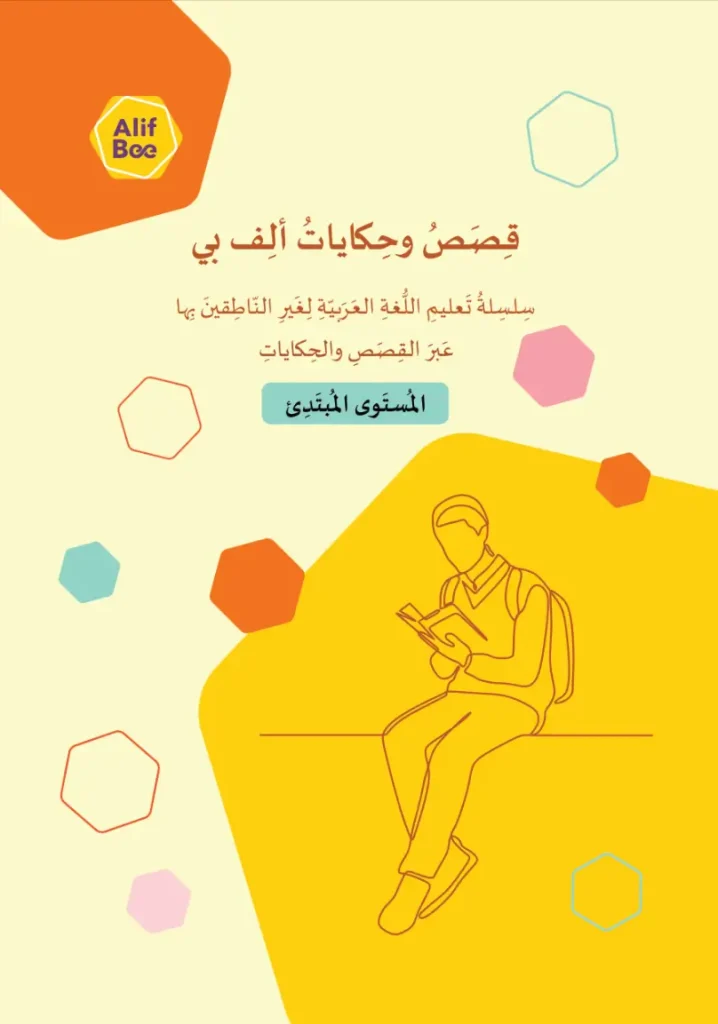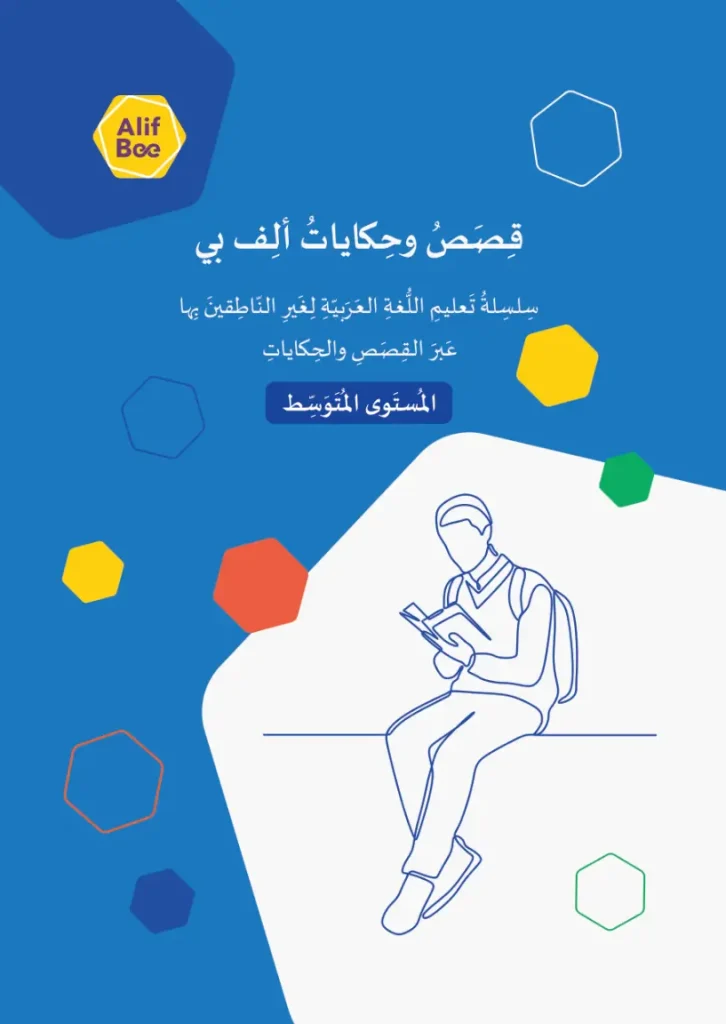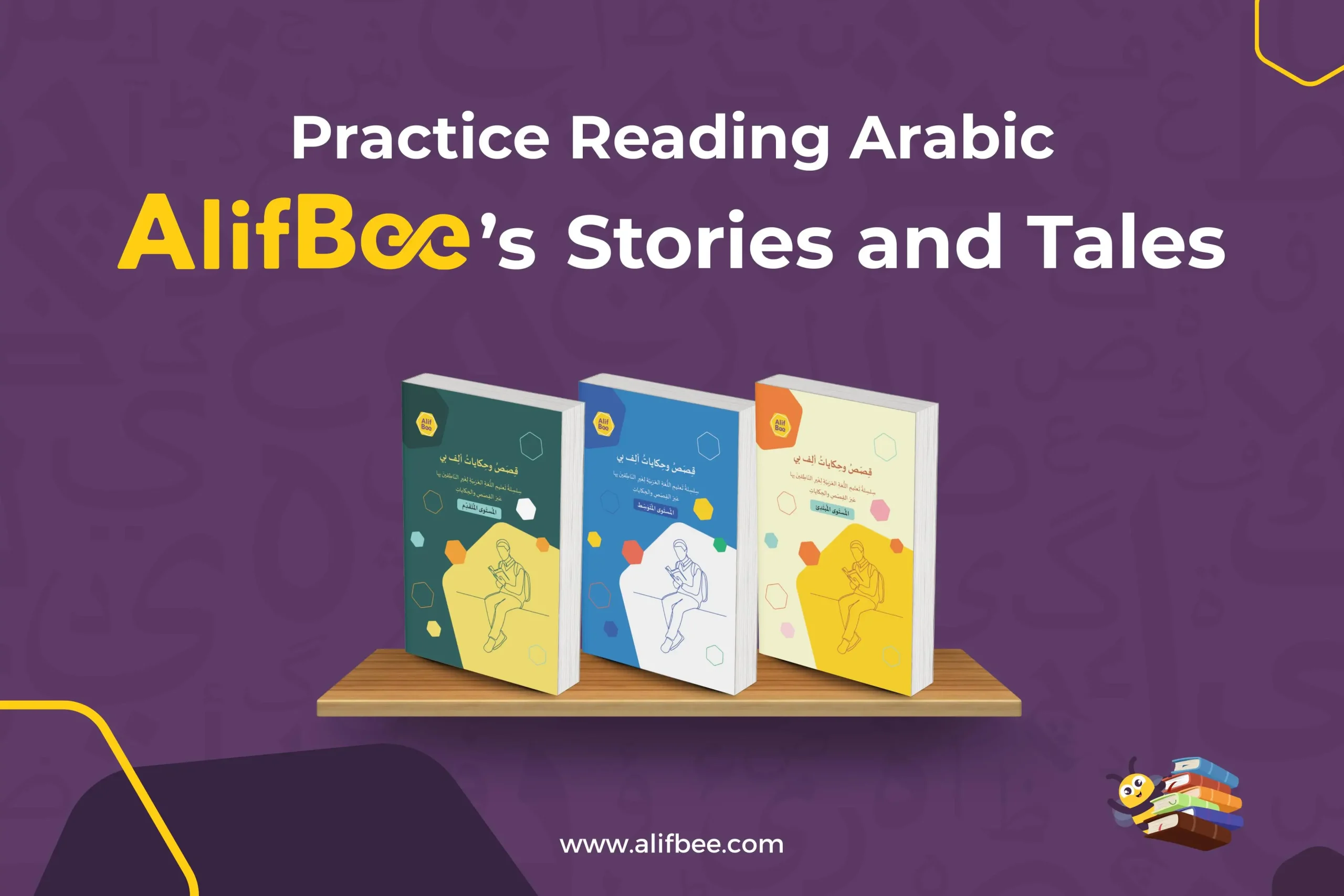
 Listen to: 3 Easy Steps to Practice Reading Arabic with AlifBee’s Stories and Tales
Listen to: 3 Easy Steps to Practice Reading Arabic with AlifBee’s Stories and Tales

Why Reading Practice is Key to Learning Arabic
Reading Arabic can feel like a mountain to climb, especially if you’re just starting out. With a script that’s different from Latin alphabets, unique grammar rules, and words that change form, it’s easy to feel overwhelmed. Many learners struggle with how to read Arabic confidently, especially when they’re bombarded with unfamiliar words and complex sentence structures.
That’s where AlifBee’s Stories and Tales on Kotobee come in. The stories are designed for adult learners at levels A1 to B2, or beginner to Intermediate. These digital stories provide a fun, structured, and purposeful way to practice reading Arabic. In addition to being entertaining stories to read in Arabic, you’ll find that this series offers value for everyone, university students, self-learners, teachers, and even parents.
Meet AlifBee’s Stories and Tales
Research highlights the importance of reading stories and tales in language learning. According to Stephen Krashen, the linguist and education theorist, reading is essential to build vocabulary, develop grammar skills and enhance fluency.
On the other hand, reading stories makes language learning easier and more enjoyable, while introducing learners to the cultural context of the language. Based on this approach, the AlifBee series presents “AlifBee’s Stories and Tales,” a series designed to teach Arabic to non-native speakers by offering engaging and structured stories to practice reading Arabic.
The series is divided into three levels: Beginner, Intermediate, and Advanced, with each level containing thirty stories that match the learner’s abilities in vocabulary, structures, grammar, and spelling.
Each story or tale begins with a dedicated section that allows learners to practice reading Arabic multiple times, supported by expressive illustrations that help deepen their understanding of the events.



Each story is only one to two pages long, which is perfect for focused reading sessions. After every story, you’ll find a series of thoughtfully designed exercises that guide you through:
- Reading Comprehension: Test your understanding and think critically about what you’ve read.
- Vocabulary Building: Discover and use new words in context.
- Grammar & Sentence Structure: Learn how language works within the story.
- Writing Practice: Apply what you’ve learned by writing your own sentences, paragraphs, or mini stories.
Now, let’s explore three simple steps that will help you enhance your Arabic reading skills with the help of AlifBee’s 3-level series “Stories & Tales”.
Step 1: Start with Your Level
First of all, when you read in Arabic, don’t rush into long or difficult texts. Start with stories that match your current reading level. If you’re just beginning, the Beginner stories use simple sentence structures and familiar vocabulary, making them easy to follow.
As you grow more confident, you can practice reading Arabic at the Intermediate and Advanced levels, where you’ll learn to read Arabic from more challenging texts that offer richer language, idiomatic expressions, and more complex grammar.
Each level has 30 well-sequenced stories that gradually increase in difficulty, helping you strengthen your Arabic and add to your Arabic vocabulary without feeling overwhelmed.
Step 2: Read with a Purpose
Reading aimlessly won’t take you far and won’t give you results when learning Arabic or any language. Instead, focus each reading session on a specific goal. For example:
- Arabic Grammar: Look for recurring grammar patterns like adjective-noun order or verb forms.
- Arabic Vocabulary: Identify new vocabulary and write down at least 5–10 useful words per story.
- Arabic Culture: Pay attention to cultural elements—festivals, names, customs—that appear in the stories.
Educational experts emphasize the role of intentional reading in boosting comprehension and language retention. AlifBee’s stories come with clear post-reading tasks to support purposeful learning. In addition, teachers who intend to use the story books can easily design pre-reading tasks to complement the learning experience and achieve learning goals.
Step 3: Practice Actively After Reading
Reading Arabic short stories without follow-up is like eating without digesting. After reading each story, engage with the exercises the come after it:
- Answer comprehension questions to reinforce meaning.
- Complete vocabulary matching and sentence construction tasks.
- Write short paragraphs or continue the story to practice fluency.
According to research in applied linguistics, integrating productive skills (like writing) after reading helps learners internalize new grammar and vocabulary faster.
You can also try reading aloud or recording yourself. This strengthens your pronunciation and boosts your speaking confidence—a crucial benefit often overlooked in silent reading.
Final word
Reading Arabic gets easier when it becomes a habit. With AlifBee’s Stories and Tales, you get the best of both worlds: language learning that feels purposeful and stories that spark curiosity.
So, whether you’re learning on your own, with a teacher, or as part of a class—take the first step today. Explore the AlifBee Stories and Tales series on Kotobee and discover how fun, illustrated stories can turn reading Arabic into your favorite daily routine. (Also check our article on AlifBee’s WorkBook Series for Beginners)
Turn your screen time into story time—and see how fast you can learn Arabic!
Sources
Grabe, W., & Stoller, F. L. (2011). Teaching and Researching Reading. Pearson Education.
Krashen, Stephen D. The Power of Reading: Insights from the Research. Libraries Unlimited, 2004.
Nation, P., & Newton, J. (2009). Teaching ESL/EFL Listening and Speaking. Routledge.










